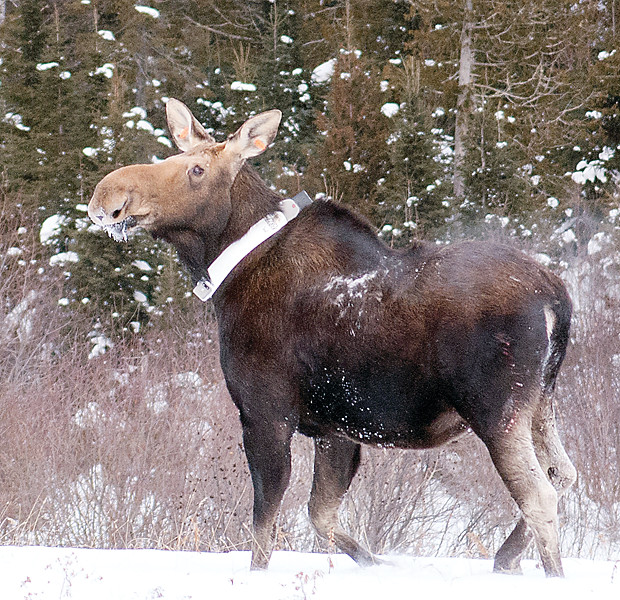Support the Timberjay by making a donation.
New deer permit area boundaries boosted harvest in moose range
REGIONAL— The numbers tell the story, and offer a measure of hope for slowing or reversing the decline of moose in northeastern Minnesota. A realignment of deer permit areas this year to coincide …
This item is available in full to subscribers.
Attention subscribers
To continue reading, you will need to either log in to your subscriber account, or purchase a new subscription.
If you are a current print subscriber, you can set up a free website account and connect your subscription to it by clicking here.
If you are a digital subscriber with an active, online-only subscription then you already have an account here. Just reset your password if you've not yet logged in to your account on this new site.
Otherwise, click here to view your options for subscribing.
Please log in to continue |
New deer permit area boundaries boosted harvest in moose range
REGIONAL— The numbers tell the story, and offer a measure of hope for slowing or reversing the decline of moose in northeastern Minnesota. A realignment of deer permit areas this year to coincide with the region’s primary moose range, appears to have worked as intended during the just-completed regular firearms deer season.
The only question is whether the moose population will respond.
It was a change prompted by research and management necessity. DNR biologists have shown that whitetail deer abundance is a primary driver of adult moose mortality in northern Minnesota. The more deer, the research shows, the more debilitating, and ultimately fatal, diseases and parasites, you’ll find in moose. Wildlife managers set their deer population goals accordingly, trying to balance the demands of deer hunters—who typically want higher deer numbers— and the need to sustainably manage for an iconic North Country species.
Yet that had proved difficult, particularly on the western edge of the moose range, where deer permit areas used to overlap with lands located outside the moose range. If the DNR allowed hunters to take too many deer in those permit areas, it could reduce the population below goals outside the moose range. Set the harvest limits too low and a burgeoning deer herd could sicken more moose.
Shifting the borders of the permit areas to align with the moose range, was the solution that wildlife managers adopted— and deer registration data shows it’s a change that worked as intended, at least this year. “That’s something to keep in mind,” said Tower Area Wildlife Manager Tom Rusch. “The first thing is, this is just one year’s data.
That said, however, he agrees that the numbers look promising. Adopting a “hunter’s choice” designation in four of the five deer permit areas in moose range coincided with a big boost in the deer harvest, particularly the harvest of antlerless deer, which jumped 231 percent in 2017. The change also pushed the percentage of antlerless deer taken by hunters in the moose range from just 20 percent last year to 43 percent in 2017.
While most permit areas saw spikes in the antlerless harvest this year, the increase in deer permit areas adjacent to the moose range jumped a more modest 106 percent, according to Rusch. Overall harvest in the moose range increased 48 percent, while the total harvest in adjacent permit areas actually fell by three percent.
The harvest numbers should help keep deer numbers in moose range somewhere near the current DNR goal, of four-to-eight deer per square mile. That’s substantially lower than deer management goals in most other parts of the region, but Rusch said it’s pretty clear that deer populations much above that level will negatively impact moose. “We used to say that ten deer per square mile was the threshold, now most biologists would probably say five-to-seven per square mile is better.”
When it comes to moose management, deer aren’t the only factor, acknowledges Rusch, but they’re the only one that the DNR has some ability to control. While wolves and to some extent black bears are moose predators, the DNR can’t do much to limit their populations. Bear populations are already under goal, and wolves remain a federally–protected species in the Great Lakes region.
“And there’s not a whole lot we can do about our milder winters,” said Rusch, who noted a recent analysis that showed winter temperatures in northeastern Minnesota are now running nearly six degrees Fahrenheit warmer than in 1970. The milder winters allow more deer to survive, putting greater pressure on moose. At the same time, the proliferation of deer feeding in many areas is negatively affecting moose, notes Rusch.
“There’s not much we can do about that, either,” he said.






